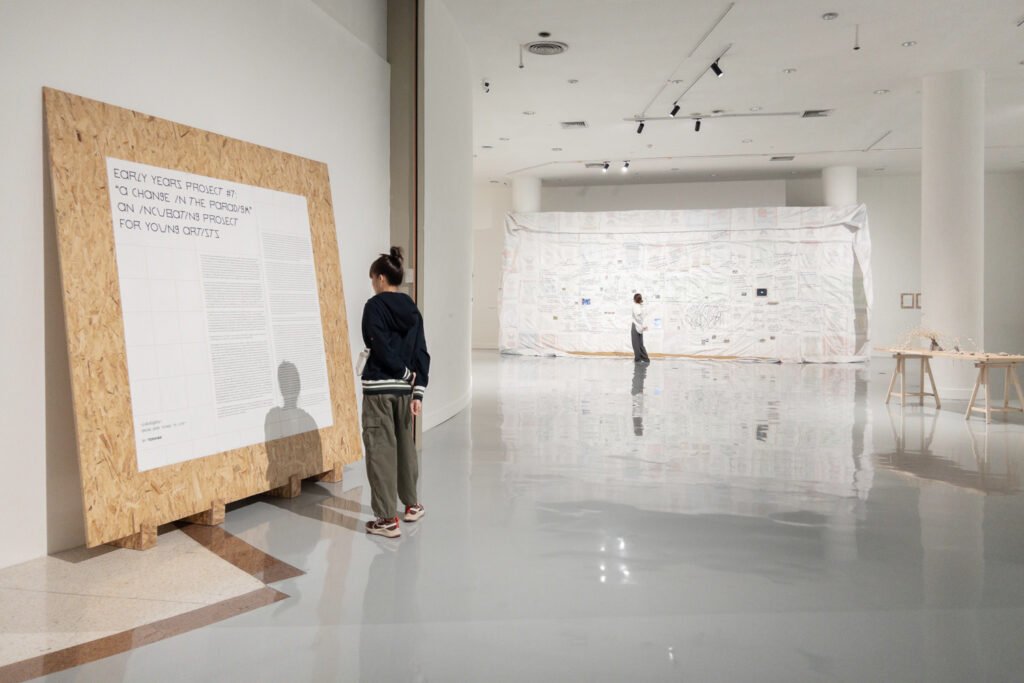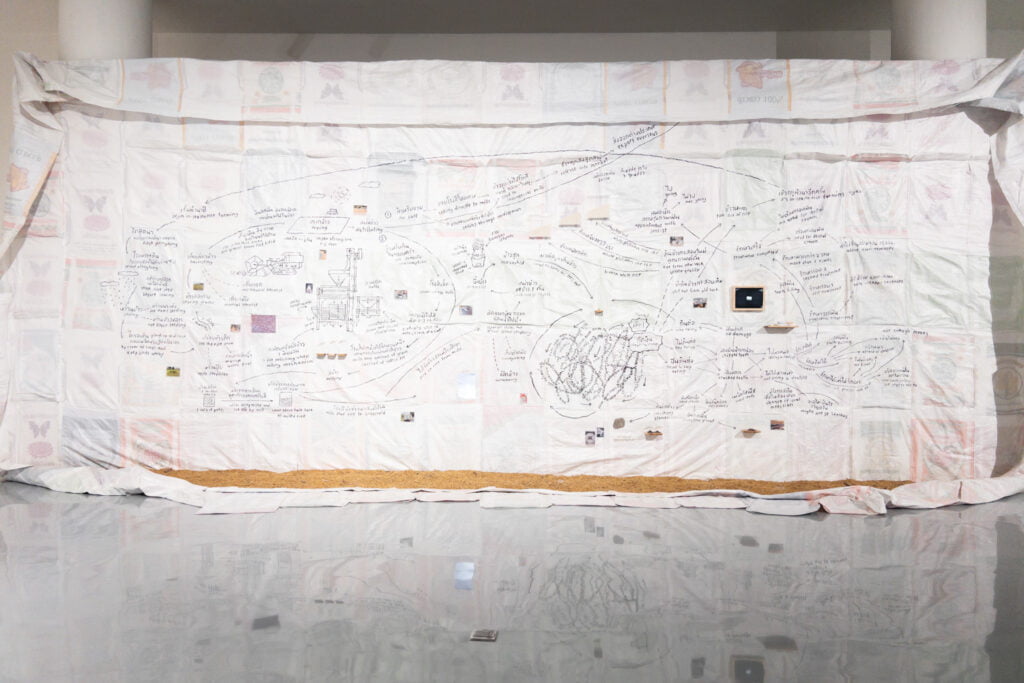EARLY YEARS PROJECT #7: A CHANGE IN THE PARADIGM
The Early Years Project #7: A Paradigm Shift is an exhibition imbued with the younger generation’s distinct ‘energy’. Such vibrancy is rooted in a fresh approach to perspective, thought, and presentation, refraining from undue preoccupation with extraneous factors.
It’s the type of characteristic that is often found in the early works of artists at the onset of their careers. As these artists mature and amass experiences, their thought processes evolve, becoming more profound, sophisticated and more nuanced, influenced by an array of elements integral to their artistic creation.

This edition showcases the works of eight emerging artists, carefully selected and developed through the Early Years Project. Launched and overseen by the Bangkok Art and Culture Centre (BACC), the project aims to foster and support the burgeoning talent of new artists. Reflecting on the project’s seven-year history of continuous effort, we have witnessed several participants from previous iterations of Early Years currently making remarkable strides in the art world.
The latest installment of the Early Years Project presents several compelling pieces, although here we will spotlight a select few, emphasizing those with the potential to resonate widely with audiences. These selected works are particularly notable for their engagement with social themes.

Beginning with Kanokwan Sutthang and her piece ‘Road of Rocks in Rice’ (2023), this work is sparked by the artist’s fascination with something as apparently trivial as the gravel she frequently encountered in the rice her family consumed while she resided in Ubon Ratchathani, a province in the northeastern region of Thailand.
Her family of rice farmers always reserves a part of their yield for their own household consumption. Kanokwan, through a diagram meticulously drawn by hand on rice sacks sewn together, delineates the rice production process.
This illustration posits that rocks could become intermixed with the rice during the harvesting, drying, and milling stages. Despite diligent efforts to eliminate these stones prior to cooking, eradicating them completely proved unattainable, often leading to the unpleasant experience of biting into gravel. This sometimes resulted in chipped or even cracked teeth, a problem she never encountered with the “Bangkok rice” after relocating to the capital city.
‘Road of Rocks in Rice’ by Kanokwan is both playful and perceptive. Her sense of humor is evident in her narrative conveyed through the diagram, particularly when she describes the ordeal of chewing on rocks in rice: “Some continue to eat, some do so reluctantly, and break a tooth.” She goes on to detail, “Some seek dental care, some do not; some are treatable, some are not—or some could seek treatment but opt not to,” citing various reasons such as “no time, fear of dentists, lack of money, etc.
” Yet, this seemingly minor story of encountering rocks in rice and its whimsical delivery reveals a deeper societal commentary. It underscores the dramatic disparity in life quality between city dwellers and those in rural areas, especially emphasizing the irony that the very farmers who produce the rice often end up with a lower quality product, leading to dental health issues and the consequent financial strain that comes with the expensive treatments.

‘Memory of Life’ (2023) by Nordiana Beehing bears a resemblance to ‘Road of Rocks in Rice’ as it also stems from the artist’s personal experiences and broadens to address societal ramifications.
However, in contrast to Kanokwan’s use of humor and satire, Nordiana adopts a more solemn tone, a choice likely influenced by her four-year ordeal of navigating hospital visits to care for her father, a kidney disease patient.
This harrowing journey introduced her to the widespread stress that afflicts patients and their families and caretakers, a distress she encountered throughout her frequent visits to a government hospital.






